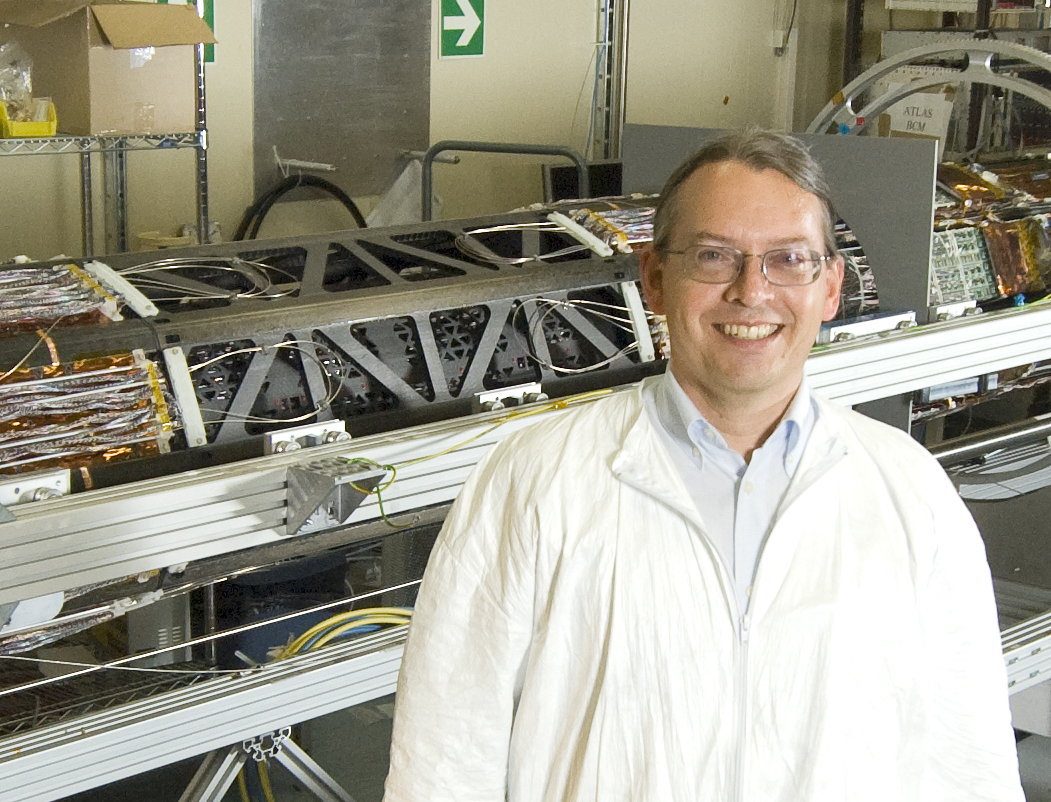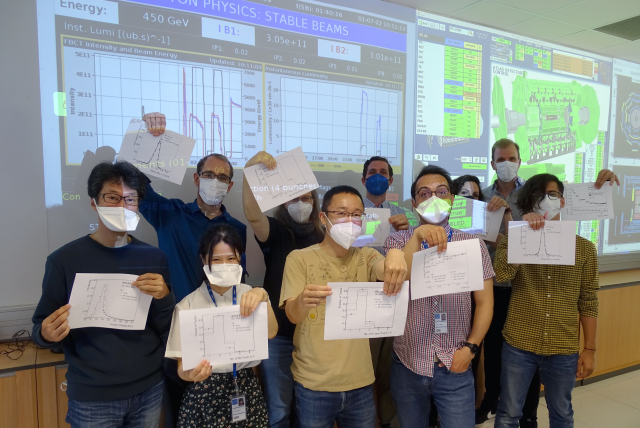Inner detector barrel installed in cryostat
23 October 2006 | By

Wednesday 23rd August was a memorable day for the Inner Detector community as they witnessed the transport and installation of the central part of the inner detector (ID-barrel) into the ATLAS detector. Many members of the collaboration gathered to witness this moment at Point 1. After years of design, construction and commissioning, the outer two detectors (TRT and SCT) of the ID barrel were moved from the SR1 cleanroom to the ATLAS cavern. The barrel was moved across the car park from building 2175 to SX1. Although only a journey of about 100 metres, this required weeks of planning and some degree of luck as far as the weather was concerned. Accelerometers were fitted to the barrel to provide real-time monitoring and no values greater than 0.1 g were recorded, fully satisfying the transport specification for this extremely precise and fragile detector. Muriel, despite her fear of heights, bravely volunteered to keep a close eye on the detector.
After arriving in SX1, the detector was lowered into the heart of ATLAS. With only a few millimeters of clearance the detector was successfully inserted in the liquid argon calorimeter cryostat.

The semiconductor tracker (SCT) and transition radiation tracker (TRT) are two of the three major parts of the ATLAS inner detector. The innermost layer (pixels) will be installed in 2007. SR1 tests confirm that design criteria are satisfied and, in particular, no evidence was found of crosstalk between the two detectors. During the recent tests in SR1, one eighth of the TRT and one quarter of the SCT were equipped with complete readout chains. Extensive standalone and combined tests were performed in order to find any effect that could cause problems during LHC operation. The results were a triumph for those who designed both systems: mechanical engineers, electronics engineers and physicists - these two detectors are completely independent and able to operate at thresholds which are close to that defined by thermal noise.
The Barrel TRT was validated in the test beam runs and cosmic runs during combined tests after integration with SCT. The on-line drift-time accuracy of an individual straw, averaged over the whole detector was shown to be less than 160 microns for Xe-based gas mixture and below 200 microns for Ar-based gas mixture without any special alignment procedure. The total number of dead channels accumulated over mechanical and electronics sources of failure is about 1.5%.
The SCT barrel contains about 3.2 million electronic channels of which 99.8% are fully operational. During the combined tests, the average module noise was stable at 4.5 x 10-5, well below the design specification of 5 x 10-4. There was no evidence of common mode noise problems either after the assembly of the 4 barrels or after insertion into the TRT barrel.
The final installation and commissioning of the Barrel started on September 26, shortly after all the required services are installed and commissioned. The challenge is now to complete the installation of the barrel TRT in 35 days and the SCT barrel in a further 77 days. The commissioning (involving the connection of cables, verifying full connectivity to the power supplies, readout and DAQ systems and on-detector function checks of all detector modules for SCT and TRT) will signal the sign off of the detector for autonomous operation for 10 years without further access. This is an absolutely daunting task.




